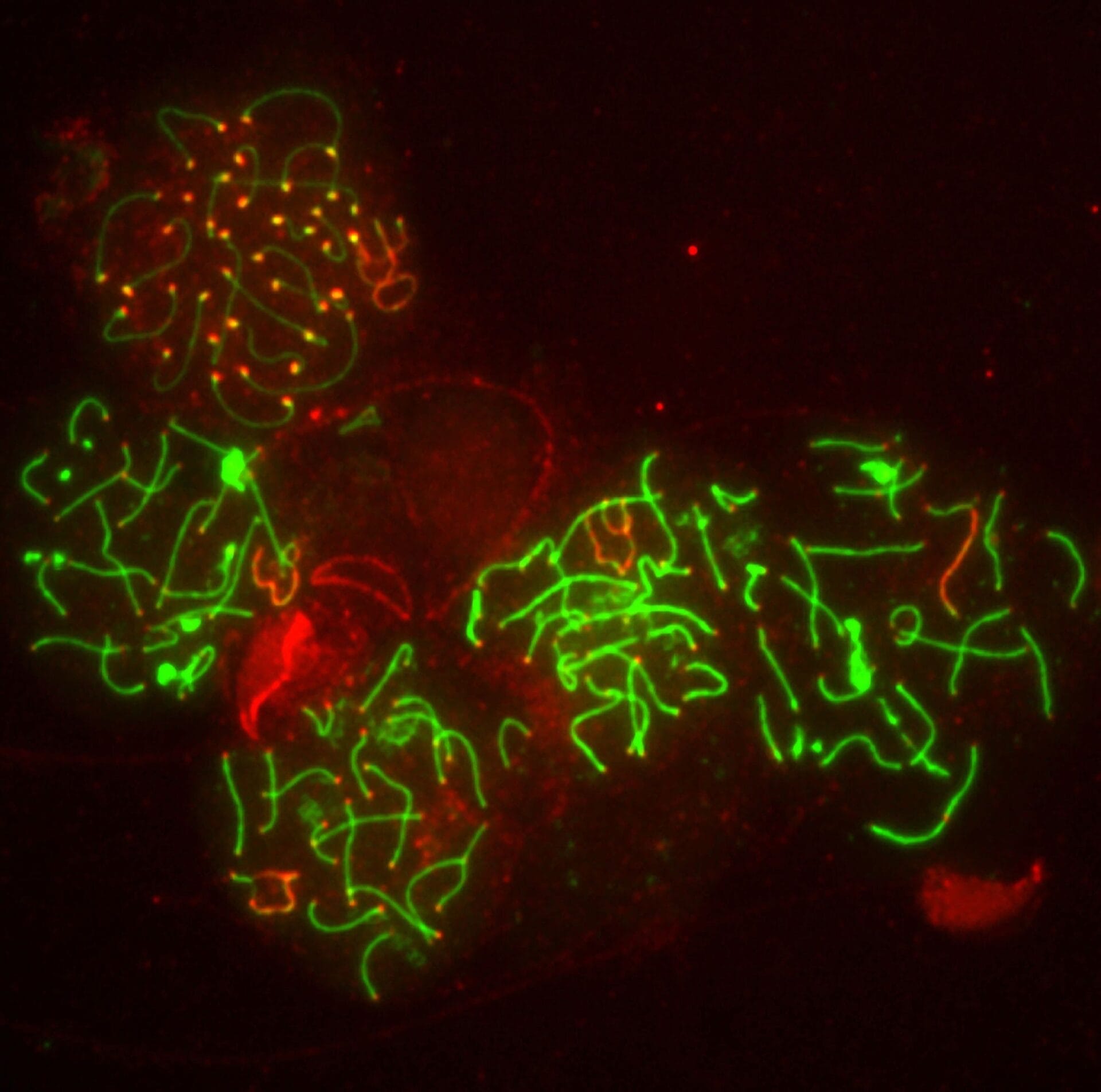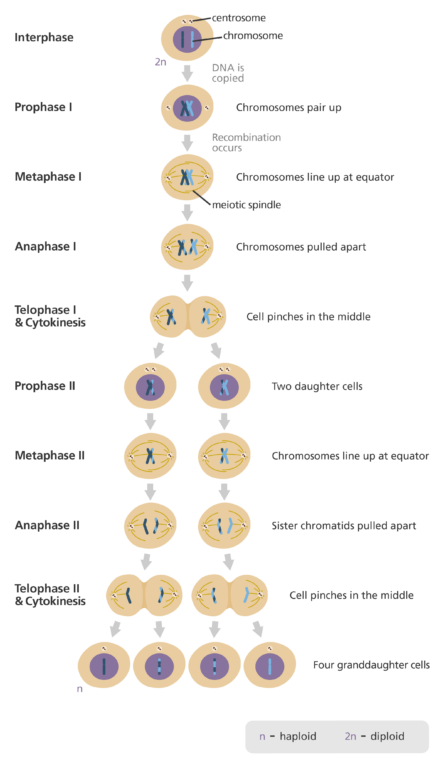What is meiosis?
Image credit: NIMR, Francis Crick Institute. Source: Wellcome Collection.

Meiosis is a process where a single cell divides twice to produce four cells containing half the original amount of genetic information.
- During meiosis one cell divides twice to form four daughter cells.
- These four daughter cells only have half the number of chromosomes of the parent cell – they are haploid.
- Meiosis produces our sex cells or gametes - egg and sperm cells.
What happens in meiosis?
Meiosis can be divided into nine stages. These are divided between the first time the cell divides (meiosis I) and the second time it divides (meiosis II).
Meiosis I
1.
Interphase:
- The DNA in the cell is copied resulting in two identical full sets of chromosomes.
- Outside of the nucleus are two centrosomes, each containing a pair of centrioles; these structures are critical for the process of cell division.
- During interphase, microtubules extend from these centrosomes.
2.
Prophase I:
- The copied chromosomes condense into X-shaped structures that can be easily seen under a microscope.
- Each chromosome is composed of two sister chromatids containing identical genetic information.
- The chromosomes pair up so that both copies of chromosome 1 are together, both copies of chromosome 2 are together, and so on.
- The pairs of chromosomes may then exchange bits of DNA in a process called recombination or crossing over.
- At the end of Prophase I the membrane around the nucleus in the cell dissolves away, releasing the chromosomes.
- The meiotic spindle, consisting of microtubules and other proteins, extends across the cell between the centrioles.
3.
Metaphase I:
- The chromosome pairs line up next to each other along the centre (equator) of the cell.
- The centrioles are now at opposite poles of the cell with the meiotic spindles extending from them.
- The meiotic spindle fibres attach to one chromosome of each pair.
4.
Anaphase I:
- The pair of chromosomes are then pulled apart by the meiotic spindle, which pulls one chromosome to one pole of the cell and the other chromosome to the opposite pole.
- In meiosis I the sister chromatids stay together. This is different to what happens in mitosis and meiosis II.
5.
Telophase I and cytokinesis:
- The chromosomes complete their move to the opposite poles of the cell.
- At each pole of the cell a full set of chromosomes gather together.
- A membrane forms around each set of chromosomes to create two new nuclei.
- The single cell then pinches in the middle to form two separate daughter cells each containing a full set of chromosomes within a nucleus. This process is known as cytokinesis.
Meiosis II
6.
Prophase II:
- Now there are two daughter cells, each with 23 chromosomes (23 pairs of chromatids).
- In each of the two daughter cells the chromosomes condense again into visible X-shaped structures that can be easily seen under a microscope.
- The membrane around the nucleus in each daughter cell dissolves away releasing the chromosomes.
- The centrioles duplicate.
- The meiotic spindle forms again
7.
Metaphase II:
- In each of the two daughter cells the chromosomes (pair of sister chromatids) line up end-to-end along the equator of the cell.
- The centrioles are now at opposites poles in each of the daughter cells.
- Meiotic spindle fibres at each pole of the cell attach to each of the sister chromatids.
8.
Anaphase II:
- The sister chromatids are then pulled to opposite poles due to the action of the meiotic spindle.
- The separated chromatids are now individual chromosomes.
9.
Telophase II and cytokinesis:
- The chromosomes complete their move to the opposite poles of the cell.
- At each pole of the cell a full set of chromosomes gather together.
- A membrane forms around each set of chromosomes to create two new cell nuclei.
- This is the last phase of meiosis, however cell division is not complete without another round of cytokinesis.
- Once cytokinesis is complete there are four granddaughter cells, each with half a set of chromosomes (haploid):
- in people with XY chromosomes, these four cells are all sperm cells
- in people with XX chromosomes, one of the cells is an egg cell while the other three are polar bodies (small cells that do not develop into eggs).
